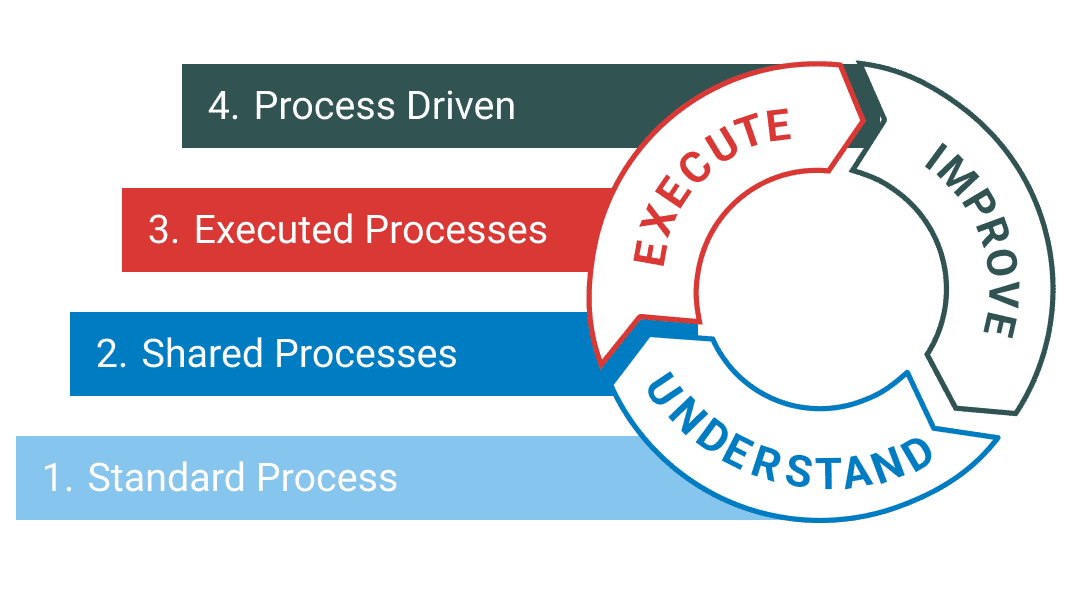
CASE STUDY
Achieving Integration Excellence: How Processes in Gluu Benefit Norlys
Following a thorough search of the market in 2020 Norlys chose Gluu as its BPM tool and platform for documenting processes. Today the energy- and telcogroup has succeeded. Success has come through an intensive focus on process governance supported by Gluu’s BPM.

“The value from process work is now very clear to the entire group.”
Read case
Julie Jensen, Process Consultant, Norlys
About Norlys
With 800,000 members, approximately 1.6 million customer relationships and 3,500 employees, Norlys is Denmark’s largest energy and telecommunications group. Norlys owns Stofa and N1 and has its headquarters in Silkeborg, Denmark.
Situation — Back in 2020, Norlys’ top management was looking for a better way to integrate acquisitions and realize synergies. One of the answers was to create a common foundation of business processes.
Problem — Until then Norlys’ approach to processes was siloed and left with a small central team.
The Process Excellence team used a different BPM tool at the time that was not suitable for engaging employees in common processes. Engaging business users was pivotal to eliminate the gaps between the processes and workflows in the real world.
Solution — With Gluu Norlys have standardized and connected 700+ processes, managed by 100+ Process Owners with 3,000+ users across the organization.
Results —Gluu is the pivot in delivering business results such as…
- raising process maturity and quality understanding.
- enabling infrastructure adjustments.
- being very easy to use and collaborate on.
- ensuring a common way of working with processes.
- gathering all approved and commissioned processes in one place, where everyone has access to them.
All this is possible since Gluu is actually liked by business users and is therefore having a positive effect on the organizational culture.
As an example, Norlys is currently in the process of developing and implementing a completely new ERP system, and here the process foundation has had a special significance from the very beginning. The project is scoped based on the process landscape, which has been used to identify all areas affected by the new system. Thus, the right processteam was set up from the start and involved throughout the project.
Even before the project goes live, all process owners are involved in the transfer of the processes to operation, so that they are trained in ownership, they know their processes and have control of interfaces to other processes. Here, both individual users ofthe processes, process owner, main process owner and End-2-End process owners have participated in various workshops.
Gluu now has a multi-year contract with Norlys and the collaboration is deepening in other areas.
The road ahead — In the near future, Norlys is very focused on raising the quality of their ‘engine room’, as they call everything that is in Gluu. The focus is on process optimization, i.e. the movement from As-Is to To-Be when processes are mapped and optimized. Here, priority is given to the processes that have the greatest potential for process gains.
“In addition to the obvious benefits of realized process gains, we also make visible the value creation of the process work for the entire group, so that the contribution of the process work to a stronger Norlys becomes very clear”, says Julie Nørup Jensen.
In addition, Norlys is also in the process of testing the use of Gluu’s app and the possibilities of connecting Gluu’s task management to the processes in, among other places, security and control-related areas, so that new systems can be avoided if possible to solve the necessary tasks.
UNDERSTAND: STANDARD PROCESS
Process governance as a BPM foundation
Process governance is an essential part of the process work in a company. It is the foundation on which process success is built. The skeleton that anchors all processes in the overall process hierarchy and clarifies process responsibilities across the organization. Many people make the mistake of making the process structure a copy of their organizational chart. Others start in a corner of the organization by mapping processes and then work their way outwards from there. But it provides blind (process) angles and supports any existing silo thinking.
A structure based on the organization’s value chain, on the other hand, provides the ‘helicopter perspective’ that is needed to get an overview of the entire process landscape. It gives a complete picture of internally connected and overlapping processes as well as “gaps” in the chain and associated improvement opportunities. If you use process governance correctly in a perspective, it can also serve as a powerful culture change tool.
However, many unfortunately overlook the importance of effective process governance, which in the worst case leads to the failure of working with processes. At best , the lack of focus generates only a fraction of the value that could be released if the potential were unleashed in full.

Process maturity through a BPM tool an essential part of the foundation
For Norlys, process governance is the foundation of the process work. They follow exactly the model recommended by Gluu, where the process hierarchy and landscape follow the company’s value chain rather than the organizational dimension. Julie Nørup Jensen, Norlys process consultant and Gluu Account Owner at Norlys, expresses it like this:
“We have created a process foundation that is as robust as possible. Therefore, we have chosen to separate it from the way we are organized, and it is different than is done in many other places. We have chosen this to ensure that we do not have several processes for the same thing”.
Julie Nørup Jensen
Processes that reflect how Norlys works
And what does Norlys’ process hierarchy look like in practice? Norlys has created a structure where the hierarchy reflects the way they work, not the departments they work in. In practical terms, this means that process hierarchy is built up of end-to-end processes, where there is a from-to-motion that reflects an overall area, e.g. HR – From Employer Branding to Resignation. The ownership of these is divided between the directors of a senior group management. The end-to-end processes are then broken down into upper-ended processes that cover a partarea during the end-to-end processes, e.g. employee and organizational development.
There is also a main process owner who is at a high level of management. The main processes are also broken down into individual processes that have a process that typically consists of a team leader or specialist in the field, and thus ensures anchoring in the operation. This means that the process ownership is so close to reality that improvements of the processes are continuously ensured so that the quality is continuously raised.
Process maturity through a BPM an essential part of the foundation
Of course, it has not gone completely without bumps in the road. The biggest surprise for Norlys has been how important a role the process organization plays. Norlys assess their process maturity as relatively low when they started their journeyt. It has therefore been necessary to build it along the way – a time-consuming exercise as with all change work, but important for the result!
However, Norlys has handled this task well, not least because of their good attitude to the problem:
“We’ve taken it one step at a time to make it fit the maturity of the group, and we’ve respected the fact that it’s not because people don’t want to. It’s because they just have to join the journey,” says Julie Nørup Jensen.
And according to Julie, Gluu has been a great help here:
“Gluu is easy to use. It’s really user-friendly, so when we keep modules to train people to use Gluu, it’s not so much the system that’s difficult. It is more to ensure quality than in what is drawn in Gluu, so that it is consistent with the way we do it in the group. Here, Gluu is a great tool to collaborate, to standardize and to raise quality”.
Other benefits from Norlys’ process work
Norlys has come a long way on their journey towards good process governance, and working with processes in such a structured way as Norlys does has already yielded great gains
Through mapping and optimization of processes, Norlys has identified a number of obvious improvement opportunities that have had an impact on both the customer experience, the bottom line and employee satisfaction. In other words, holes – blind spots – in the business have been identified by creating an overview with process mapping that has not previously been achieved. To a large extent, this also applies to interfaces between processes and the realization of synergy effects across the organization’s processes.
